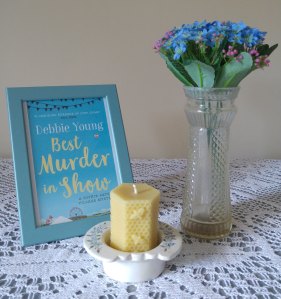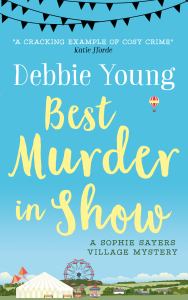A tribute to my maternal grandmother through the medium of forget-me-nots

My maternal grandmother, whom we all called Mam, had simple tastes in flowers: the roses that edged the lawn of her suburban garden; sweet peas grown by my grandfather, Pop, in the vegetable patch at the end of the garden. But when as a teenager I bought her cut flowers, her preference was for freesias.
I suspect I first bought freesias because they were the only ones on the railway station stall that fell within my student budget, but she declared them her favourite.
With the hindsight of an adult, I suspect now she’d have said the same of any flower I gave her, but at the time I took her at her word and ever after I bought her freesias.
“Ah, my flowers!” she would smile, when I presented her with the latest bunch.
I appreciated them too, not just for their exotic fragrance, out of all proportion to the size of the flower, but because they were surprisingly robust, their slender stems having a wiry strength. They were also more dependable. Not for freesias the sulky post-purchase droop of hothouse roses.
Not Forgotting…
But there’s a second flower that I can’t see without thinking of Mam, and that’s the humble forget-me-not.
As any English gardener knows, forget-me-knots readily self-seed and spread. Left unchecked, they’ll carpet a flowerbed in no time. Some people even view them as weeds, defining weeds as any plant that grows where you don’t want it to.
But to my child’s eye, they were enchanting, their tiny flowers like little faces nestling among the furry foliage.
They were flowers fit for a fairy.
The Discreet Charm of the Forget-Me-Not
Forget-me-nots were even more charming than the bluebells that ran wild in the woods behind my primary school. In spring, every classroom windowsill boasted a jam jar full of bluebells, picked on our way to school as an offering for our teacher. No matter how many we picked, there always seemed plenty more.
But in Mam’s garden, the forget-me-not was colonist-in-chief.
As I walked up the back garden path on my weekly visit after primary school, I’d linger to admire them, picking a bunch to present to Mam when she came to greet me at the back door.
I was particularly pleased in the years when she let them run rampant, overflowing the flower bed that ran parallel to the concrete garden path. At the time, I wondered why she looked a little wry when I remarked upon a particularly fine crop.
Only later did I realise that the best crops occurred in the years when she couldn’t find it in herself to keep the garden in order: perhaps the year her beloved big sister Auntie Ev had died, or when my grandfather, Pop, had been very poorly with a stomach ulcer.
Even if these little blue flowers didn’t have their distinctive name, they would, like freesias, ever since have reminded me of Mam.
From Fact into Fiction
And that is why, decades later, writing my Sophie Sayers Village Mysteries, when seeking a flower to be a motif in her stories, the choice of the forget-me-not was obvious.
In the first book in the series, Best Murder in Show (published three years ago today!), Sophie’s eyes are the colour of forget-me-nots. Without spoiling the plot, Hector Munro, who employs Sophie in his village bookshop and soon strikes up a romance with her, comes to appreciate them too. He pays a special tribute with a forget-me-not theme on Valentine’s Day, towards the end of the fourth book in the series, Murder by the Book. I think Mam would have approved.
SPECIAL EBOOK OFFER: BEST MURDER IN SHOW – CURRENTLY FREE!

The ebook of Best Murder in Show is currently free on all ebook readers including Kindle, Kobo and Apple Books.
I’m pleased to say it has recently been at the #1 spot in the Free Kindle Book charts in both the UK and the USA. Don’t miss your chance to download your free copy!
The paperback is also available to buy at its usual price.
Download your free copy from the online retailer of your choice
(Also available as an audiobook from all good online audiobook retailers)
Or order the paperback from your local bookshop
(Quote ISBN 978-1-911223-13-9)

